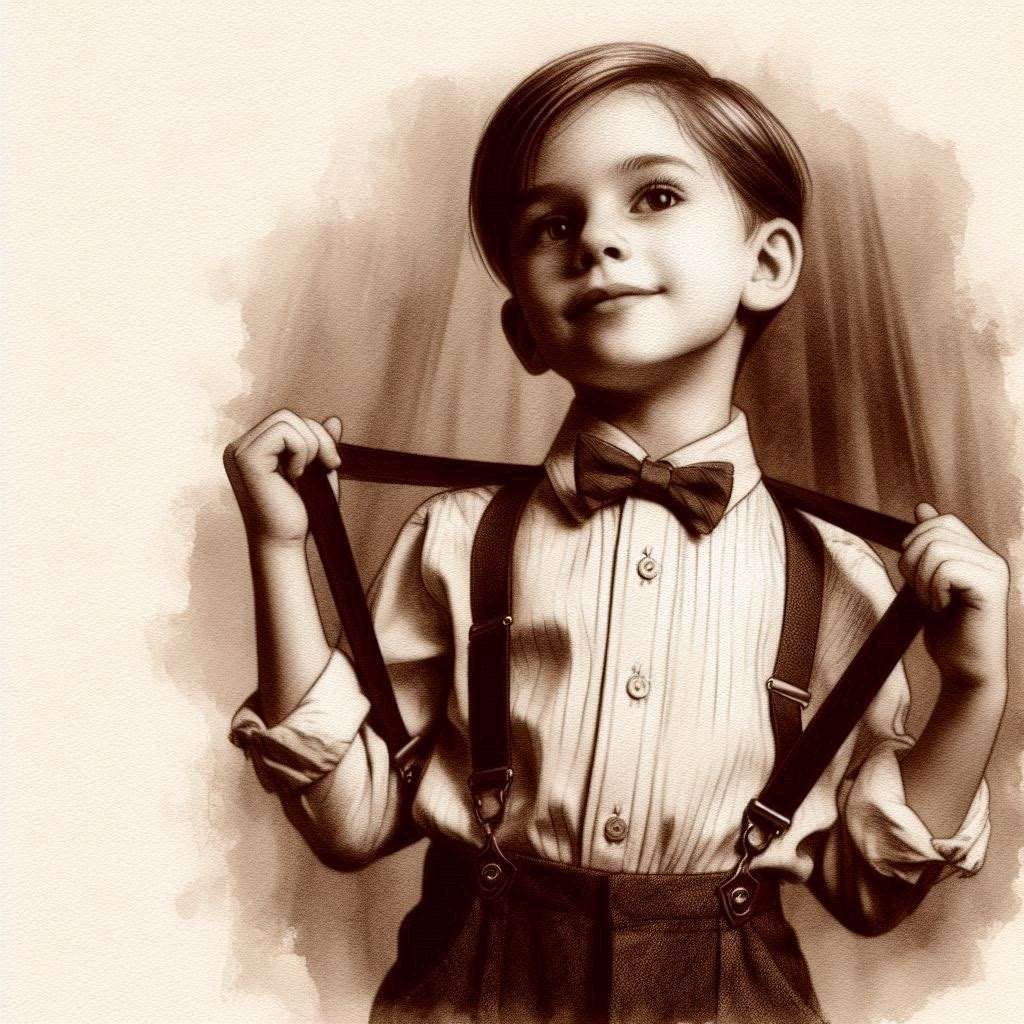But the history books:
In the heart of a small town, where the scent of blooming magnolias mingled with the laughter of children, there lived a girl named Amy. Her hair was a wild tangle of sun-kissed curls, and her eyes held the curiosity of a thousand constellations. Amy believed in possibilities—the way rainbows arched across the sky after a storm, promising hope even in the darkest moments.
Amy’s dream was simple yet audacious: she wanted to be the president of the United States. She’d seen the portraits of past leaders—stern faces in suits and ties—and she imagined herself among them. But there was a problem: Amy thought you had to be a boy to become president.
Her reasoning was innocent—a blend of childhood logic and societal norms. She’d read about George Washington, Abraham Lincoln, and John F. Kennedy—all men who’d held the highest office. So, Amy decided that if she wanted to lead the nation, she needed to be a boy.
She cut her hair short, donned her older brother’s oversized shirts, and practiced speaking in a deeper voice. Her parents chuckled, thinking it was a phase. But Amy was determined. She’d sneak into the library, reading biographies of male presidents, memorizing their speeches, and practicing their stern expressions in the mirror.
One day, as Amy sat on the swing in the park, her best friend, Robin, joined her. Robin’s eyes sparkled with mischief. “Why are you dressed like a boy, Amy?”
Amy hesitated, then whispered her secret. “I want to be the president. But only boys can do it.”
Robin tilted her head. “Why would you think that?”
“Because all the presidents were boys,” Amy replied.
Robin laughed. “Amy, you’re smart, brave, and kind. You’d make a fantastic president—whether you wear pants or skirts.”
Amy blinked. “But the history books—”
Robin interrupted. “History books are written by people, Amy. And sometimes, people forget that girls can change the world too.”
That night, Amy lay in bed, staring at the glow-in-the-dark stars on her ceiling. She thought about Robin’s words. Maybe she didn’t need to be a boy to lead. Maybe she could rewrite the story—a story where girls stood shoulder to shoulder with boys, where dreams knew no gender.
Amy started a journal—a diary of her journey toward the presidency. She wrote about her love for the Constitution, her passion for justice, and her belief that kindness could heal a nation. She wore her hair however she pleased, and she spoke with her own voice—soft yet unwavering.
As Amy grew older, her dream remained intact. She joined student government, debated policies, and rallied for change. She wore dresses to formal events and pantsuits to debates. And when she ran for class president, she won—not because she was a boy or a girl, but because she cared deeply about her classmates.
Years passed, and Amy’s name appeared on ballots. She campaigned tirelessly, crisscrossing the country, shaking hands, and listening to stories. And when the election results came in, Amy stood before a cheering crowd—not as a boy, not as a girl, but as a leader.
In her victory speech, Amy looked into the camera. “I stand here today,” she said, “not because of my gender, but because of my heart. Let us rewrite history—together.”
And so, Amy became the first female president. She wore pantsuits and pearls, and she led with compassion. She didn’t forget the little girl who’d thought she needed to be a boy. Instead, she whispered to the stars, “Thank you, Robin. You taught me that dreams have no gender.”
And in the quiet of her office, surrounded by the weight of responsibility, President Amy penned a letter to her childhood friend—a letter that began with the words, “Dear Wise One.”
And so, Amy’s story became a testament—a reminder that dreams are not confined by labels, and the path to greatness is paved with courage and conviction.



